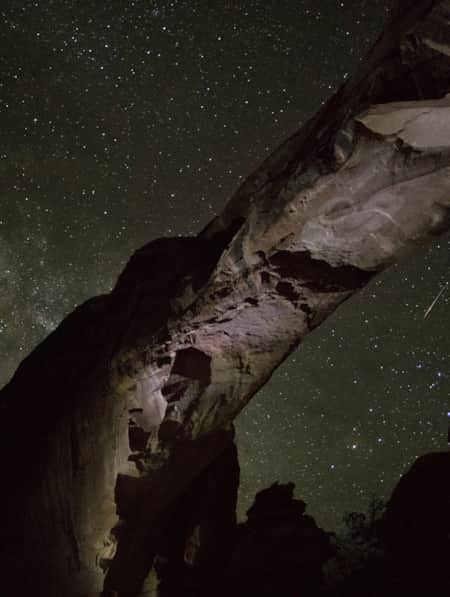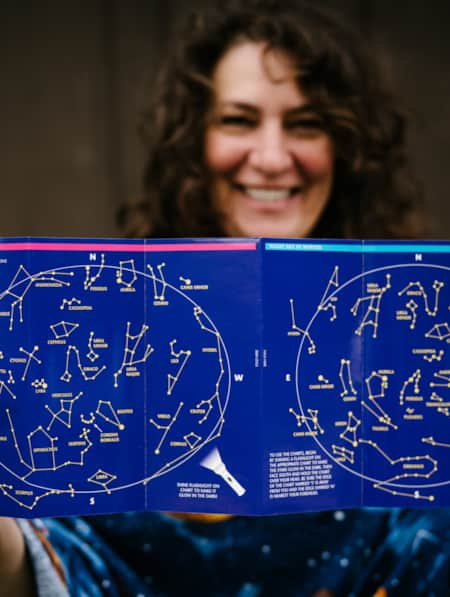Seeking Starry Skies Near Salt Lake City
In Utah, you don’t have to go far from the city to find dark skies filled with stars.
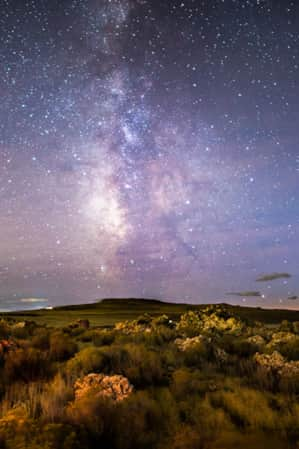
Having grown up in Utah, I was lucky enough to spend many weekends under starry skies while camping in our beautiful outdoor spaces. My family regularly camped in Moab or close to home in the Wasatch Mountains. One of my favorite things about these vacations was the opportunity to stargaze. Sometimes in the summer I slept outside of a tent, so I could count shooting stars as I drifted off to sleep.
When I could drive, I started camping with friends. Once, I remember showing up after dark to a campsite, when my friends were already gathered around the campfire. Someone bet that the first thing I’d do when I stepped outside of the car would be look up and say something about the stars. Sure enough, I stepped outside, immediately looked up in awe and shouted, “Wow, look at the stars!” and they all burst into laughter at my predictability.
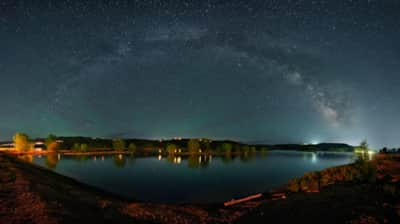
Star Party Experience
The first time I went to a star party (Read: A Party of Astronomic Proportions) — where park rangers point out constellations and provide telescopes for better viewing — it was held at Antelope Island State Park. I was amazed that I was only minutes away from home (54 minutes from Salt Lake City), and yet we were looking at the Milky Way. I’ve always felt a special connection to the universe when stargazing, I was named after Halley’s Comet after all, but the experience of seeing Saturn's rings through a telescope made me feel even more part of our universe.
As society has largely evolved from living in the wilderness to living in developed cities, we have slowly been losing accessibility to dark skies and the visibility of stars. An estimated 99 percent of people in the United States and Europe live under light-polluted skies, according to The First World Atlas of the Artificial Night Sky Brightness. Researchers claim humans need natural darkness to maintain health and regulate our natural internal clock. So not only is it awe-inspiring to have enough darkness to see the stars, but it’s also positive for our well-being.
"I’ve always felt a special connection to the universe when stargazing, I was named after Halley’s Comet after all, but the experience of seeing Saturn's rings through a telescope made me feel even more part of our universe. "
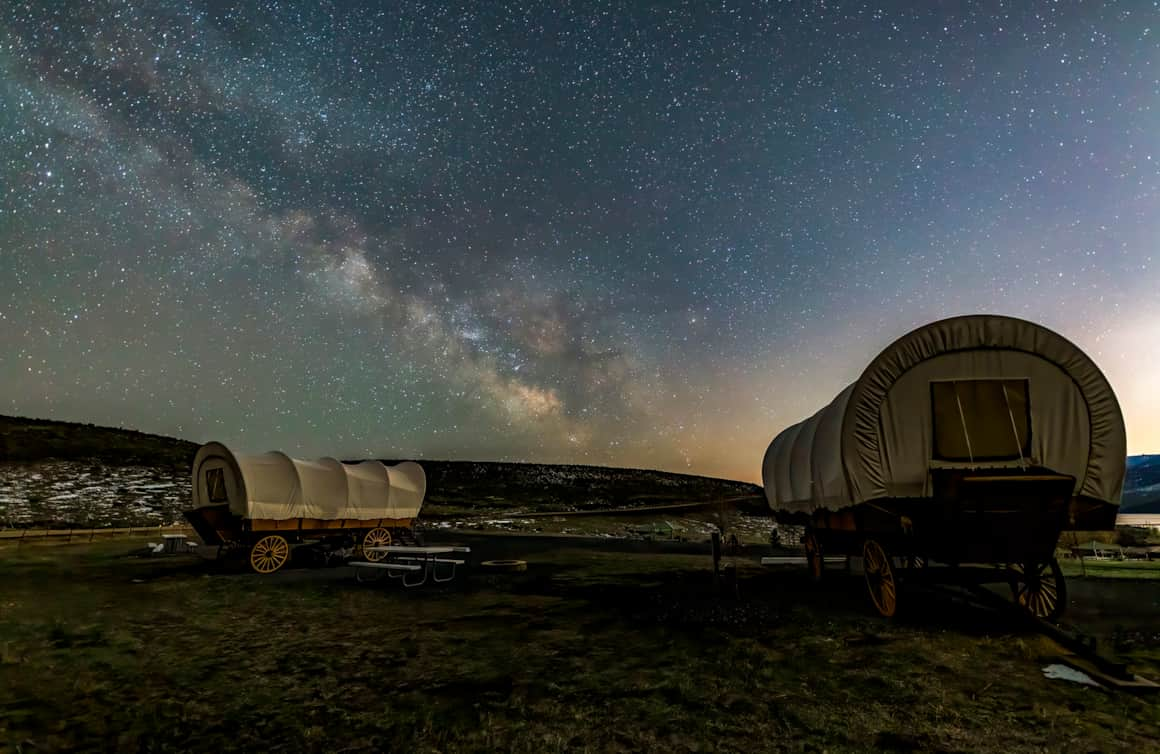
Although East Canyon State Park is just short drive from Salt Lake City, the mountains help shield its dark skies from urban light pollution.
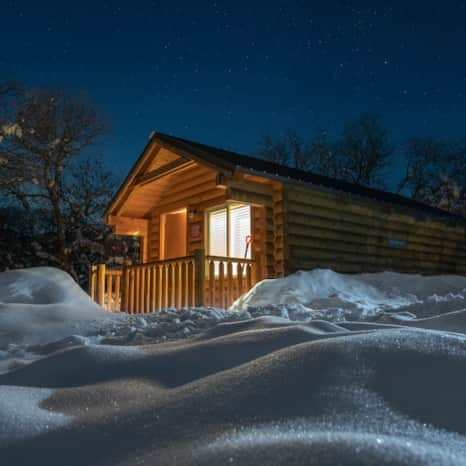
You can book a cabin for a dark sky overnight in Wasatch Mountain State Park.
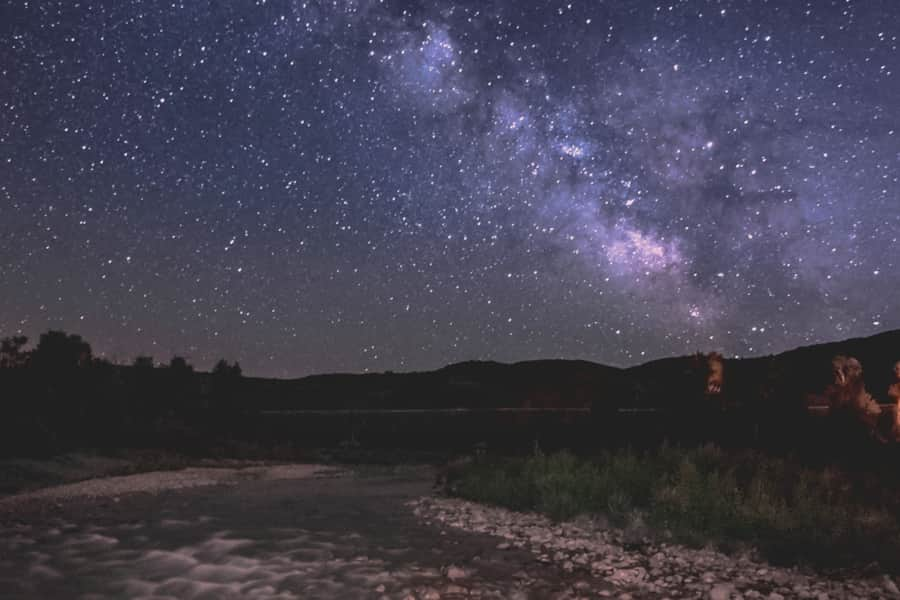
Jordanelle State Park was certified as an International Dark Sky Park in January 2021.
Dark Skies Near the City
In Utah, you don’t have to drive far from the cities to find beneficial darkness (Read: Utah After Dark). Of the vast amount of Certified International Dark Sky Parks and locations in the world, the highest concentration is in Utah. Within about 100 miles of Salt Lake City, there are seven Dark Sky Places, certified by the International Dark Sky Association (IDA).
- Timpanogos Cave National Monument (35 miles from Salt Lake City)
- East Canyon State Park (35 miles)
- Jordanelle State Park (37 miles)
- Rockport State Park (37 miles)
- Antelope Island State Park (42 miles)
- North Fork Park (58 miles)
- Helper City (111 miles)
Bonus spots:
- Camp Floyd State Park (45 miles); unofficial dark sky park that hosts star parties.
- Wasatch Mountain State Park (46 miles); pending IDA Dark Sky Park certification.
To make it easy, follow this six-day itinerary: Stars by the City.
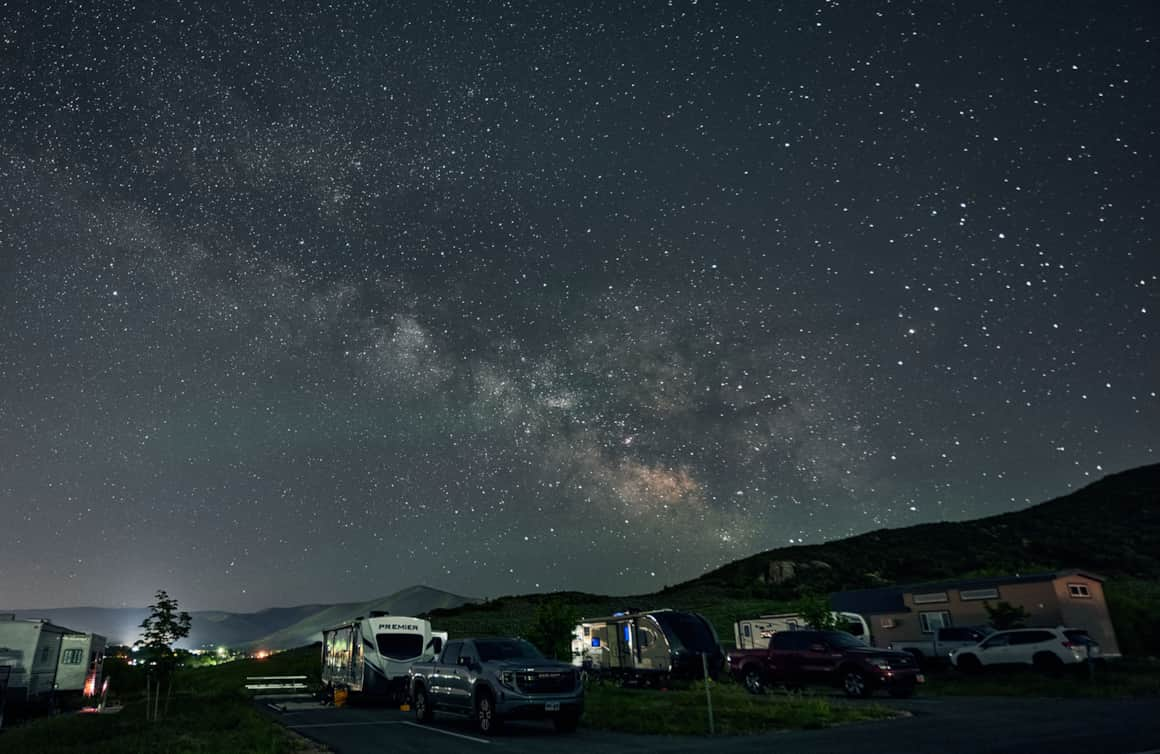
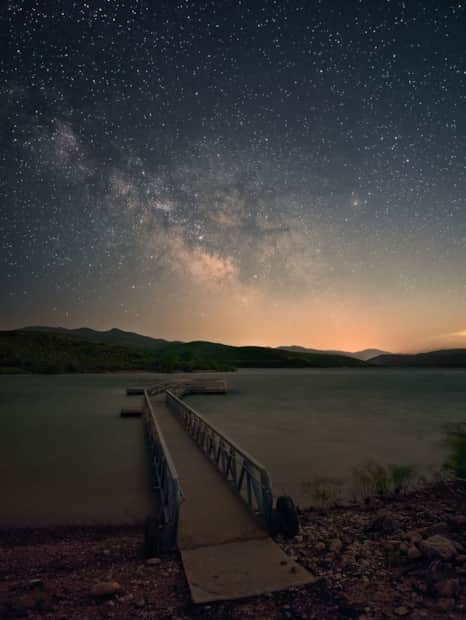
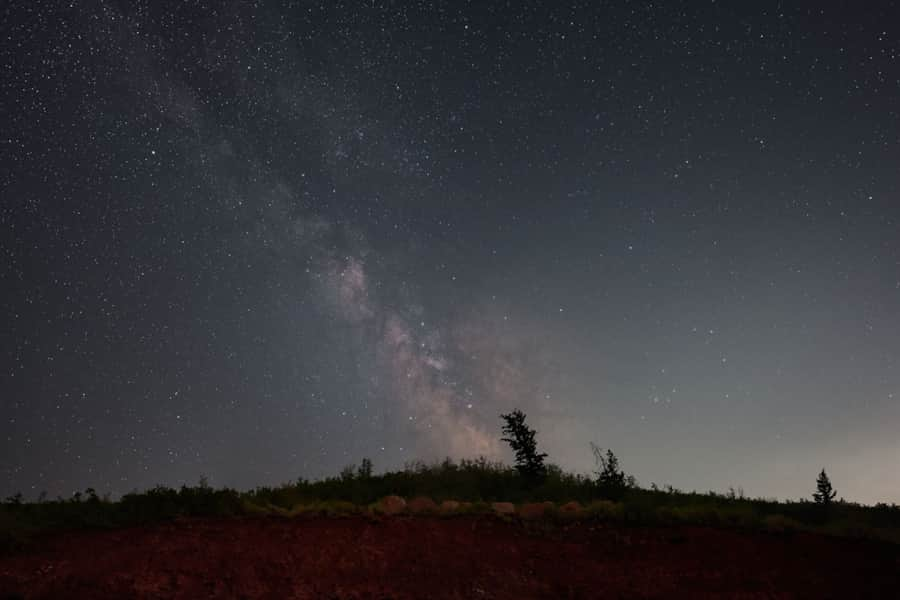
So Close — Yet A World Apart
“Although we are less than one hour from Salt Lake City and the Wasatch Front communities, the island feels like a world apart,” explains Wendy Wilson, assistant park manager of Antelope Island State Park.
Wilson led the effort of getting the park IDA-certified. Utah leads the world in these certifications because of its great expanses of naturally dark areas, but also because land managers and community members value protecting natural darkness and do the necessary work to keep it protected, she said.
Wilson helps lead dark sky events, like the one I attended, on Antelope Island. “Even if there isn’t an event on the night you visit a dark sky place, visitors are welcome to set up a chair, or lay out a blanket and just enjoy the night on their own,” she says. “You may even be serenaded by the hoot of an owl or the howl of a coyote.”
If a hotel stay is more your style, consider staying at Compass Rose Lodge in Ogden Valley. They have a built-in observatory and regular events so that visitors can look into deep space.
"Even if there isn’t an event on the night you visit a dark sky place, visitors are welcome to set up a chair, or lay out a blanket and just enjoy the night on their own. You may even be serenaded by the hoot of an owl or the howl of a coyote."
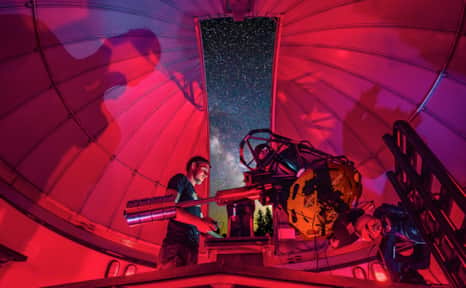
Compass Rose Lodge hosts nightly star tours in its HALO Observatory.
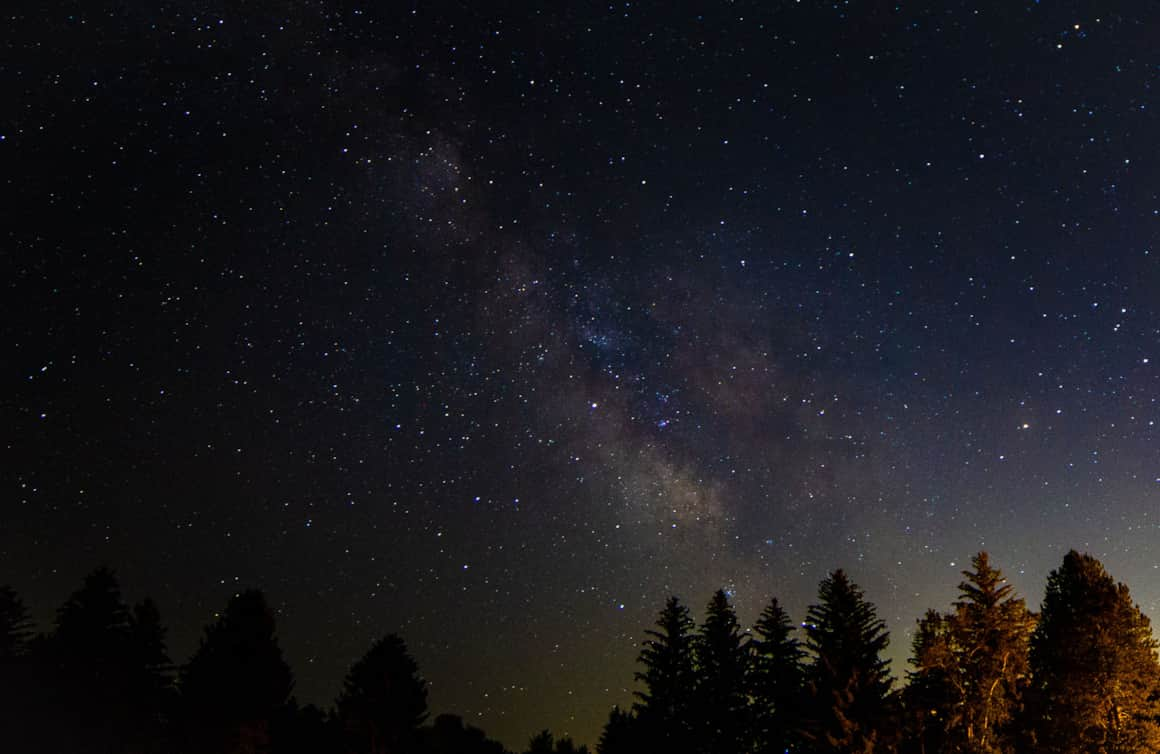
The Milky Way lights up the summer night sky over Huntsville, Utah.
Ogden Valley Stars
Located near IDA-accredited North Fork Park, Compass Rose Lodge owners are proud to be a part of the dark sky community in Ogden Valley. In 2015, Weber County’s North Fork Park was the world’s first bronze-tier International Dark Sky Park to be accredited. That’s significant since the park is minutes from Ogden. Leaders worked hard to raise awareness on light pollution beyond the park to help protect the darkness. They qualified for the first IDA classification, which is the bronze-tier. With more darkness and protection from light pollution, an IDA-certified place can receive silver or gold classification.
“Nearly every culture in human history has in some way linked their origin stories to the stars,” says Dakota Hyde, who built and designed the Huntsville Astronomic and Lunar Observatory at the lodge. “Many people don’t have as personal of a relationship with the stars as our ancestors did. That’s why dark sky places are so special to me.”
“When we rotate the observatory dome, visitors will say it feels like they’re in a spaceship,” Hyde says. “It’s really fun to hear all of the ‘wows’ when they get to look through a telescope and see the rings of Saturn for the first time or see the Galilean moons of Jupiter or the details of the Orion Nebula.”
I have had that jaw-dropping experience at a dark sky event, and hope everyone takes the opportunity to visit one of Utah’s dark sky parks or observatories to experience the awe.
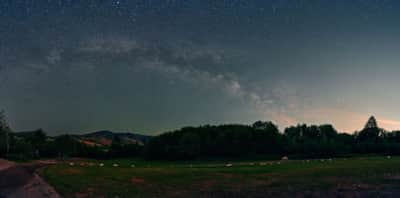
What's Nearby
-
Antelope Island State Park
Antelope Island State Park is 25 miles north of Salt Lake City. Accessed by a causeway, the island sits in Great Salt Lake and features free-roaming bison and antelope herds.
-
East Canyon State Park
For history buffs, East Canyon offers the opportunity to retrace the footsteps of pioneers. Visitors can splash in the springs where the Donner party collected drinking water, hike beside Brigham Young’s wagon ruts, or mountain bike down the Pony Express route.
-
Jordanelle State Park
Jordanelle State Park is an ideal spot for Utah stand-up paddleboarding but also offers hiking, mountain biking, boating and more. Check it out!
-
Rockport State Park
Find first-rate, year-round recreation at this northern Utah destination.
-
Timpanogos Cave
Timpanogos Cave sits high on the northern slope of Mount Timpanogos in the Wasatch Mountains of northern Utah.





